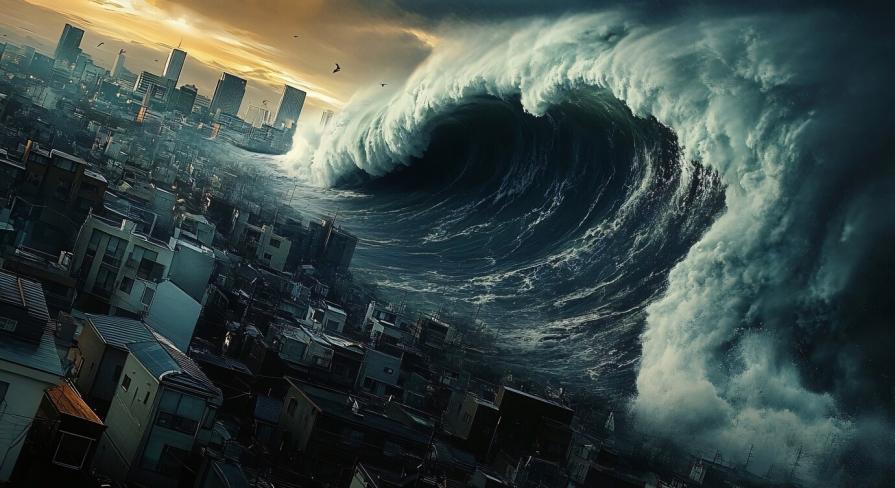The most famous place where people lived, hidden today by the sea abyss - Atlantis. Hundreds of scientists continue to debate its hypothetical location, while science fiction writers continue to use the legend of Atlantis for book plots.
In addition to the sunken continent with the capital surrounded by rows of gilded and silvered walls, dozens of such settlements with colossal historical and cultural significance can be found on the planet.
Samabah in Guatemala
The ruins of the ancient city of Samabah (Samabajo) are hidden by the waters of a lake called Atitlan. It is the most popular tourist ruin and Guatemalan landmark. Discovered in the 96th diver Robert Samayoah, the city plunged to a depth of thirty-five meters. It seems that this happened very quickly, most likely due to an earthquake 2-3 thousand years ago. The city is perfectly preserved: when diving, you can see colorful and bright ceramics, vessels of religious purpose, skillfully carved stone altars.
Dwarka (India)
In 2003, in a small bay off the coast of India, scientists found the ancient Mesopotamian (or Sumerian?) city of Dwarku. Scientists examined the water in terms of purity and suitability for irrigation purposes after desalination - and at a depth of forty meters found a heavily destroyed city.

The study of the carbon method showed that a number of finds belong to the third to fifth millennium BC. The water rose gradually, making the settlement uninhabitable. Therefore, there are few archaeological finds - most of the utensils were taken away by the residents with them, leaving their homes.
Alexandria in Egypt
The ancient city was away from the present. It was destroyed and sunk by a cyclopean earthquake in 336 AD. The consequence of the cataclysm was the departure under water not only of part of the city, but also of the surroundings mastered in agricultural terms. It took hundreds of years to recover.
The city was found in 1998 after several dozen unsuccessful expeditions. Among the ruins was discovered the legendary palace of the Egyptian queen and wife of Caesar Cleopatra. Excavations allowed to replenish the collections of local museums thinned as a result of robbery by British colonizers and adventurers.
Pavlopetri in Greece
It is considered the oldest of those that were discovered in the sea. It was located in the southern part of Laconia, and now it is located at a depth of three meters near the coast.
On the territory of the city with a total area of more than 30 thousand square meters. luxuriously furnished ruins were discovered. The fall of the city was caused by the seismic activity characteristic of the eastern Mediterranean Sea.
Port Royal in Jamaica
The capital city and port of the English colony in Jamaica was built at the beginning of the XVI century in the southeast of the island just conquered from the Spaniards. A trading outpost and center of plantation land ownership on the island, the royal navy base eventually became the capital of Caribbean piracy on a par with Tortuga.

If you've read Captain Blood's chronicles or watched pirates of the Caribbean movies, you have an idea of what it was.
In 1692, as a result of a terrifying earthquake in strength and scale, a huge piece of land collapsed to a depth of twenty meters, and the rest was swept away by a wave. The local episcopate immediately declared the events a punishment for the sinful way of life of the corsairs and the population serving them.
Archaeologists have extracted from the water a large number of pirate household items, as well as clothes, utensils, books and valuable documentation. The authorities were offered to museumify everything here, but so far there are no funds in the treasury.
Heracleon and Canopus in Egypt
In 1997, French underwater archaeologists began to study abukir Bay, seeking to find ships of the British and French fleets that sank during the Napoleonic Wars. Three years later, it turned out that the ancient city of Canopus lurks in the water column, and in 2012 the head of the expedition discovered another city - Heraklion.
The names are modern, based on ancient Egyptian and Greek myths. No living soul knows real historical ones. For twenty years, hundreds of things of enormous historical and cultural significance have been extracted from the bottom of the Mediterranean Sea.











